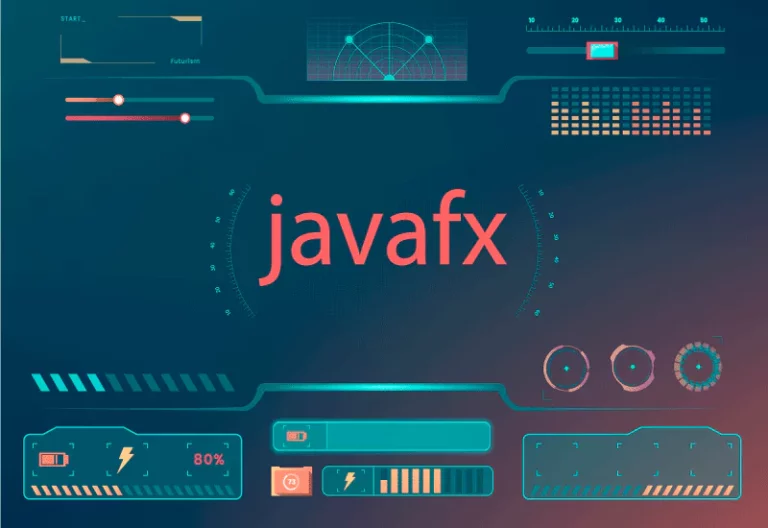Java has been a dominant force in the world of programming for decades. It’s renowned for its versatility, portability, and robustness. When it comes to creating user interfaces, JavaFX has emerged as a powerful framework that allows developers to build rich and interactive graphical user interfaces (GUIs) seamlessly. In this article, we will explore the capabilities of JavaFX and how it enables developers to create visually appealing and responsive applications.
JavaFX: A Brief Overview
JavaFX is a modern, declarative, and platform-independent framework that’s been part of the Java Standard Library since Java 8. It is designed for creating visually rich, interactive applications that can run on various platforms, including Windows, macOS, Linux, and mobile devices. JavaFX provides a wide range of features and tools for building intuitive user interfaces and is well-suited for developing desktop applications, mobile apps, and embedded systems.
Key Features of JavaFX
1. Rich UI Controls: JavaFX offers a comprehensive set of UI controls that can be easily customized and styled to meet the specific design requirements of an application. It includes buttons, text fields, combo boxes, and many more, all with built-in functionality and events.
2. FXML: FXML is an XML-based language that allows developers to define the UI layout and structure separately from the application’s logic. This separation of concerns simplifies the development process and promotes better code organization.
3. CSS Styling: JavaFX supports Cascading Style Sheets (CSS) for styling UI elements, making it simple to create visually appealing and consistent interfaces. CSS provides fine-grained control over the appearance of UI components.
4. Scene Builder: Scene Builder is a visual layout tool that simplifies the design of JavaFX applications. It allows developers to drag and drop UI components onto a canvas, making UI design intuitive and efficient.
5. 3D Graphics: JavaFX includes support for 3D graphics, making it possible to create immersive and interactive 3D applications and games.
6. Animation: The framework provides robust animation capabilities, allowing developers to create smooth and engaging transitions and effects.
7. Media Support: JavaFX supports multimedia elements like audio and video, making it suitable for building multimedia-rich applications.
Advantages of Using JavaFX
1. Cross-Platform Compatibility: Applications developed with JavaFX can run on multiple platforms without major modifications, saving time and effort in development.
2. Performance: JavaFX leverages hardware acceleration for rendering, resulting in high-performance graphics and animations.
3. Community and Documentation: JavaFX benefits from a strong community and extensive documentation, making it easy for developers to find resources and support.
4. Integration with Java: JavaFX seamlessly integrates with Java, allowing developers to leverage the extensive libraries and frameworks available in the Java ecosystem.
5. Open Source: JavaFX is an open-source project, ensuring its continued development and improvement.
Key Components of a Comprehensive Java and JavaFX Training Program
To master Java and JavaFX, enrolling in a reputable Java Training Institute in Meerut, Lucknow, Mathura, Noida or other cities in India is crucial. These institutes offer structured courses that cover both the fundamentals and advanced topics of Java programming and JavaFX development. Here are some key aspects you can expect to learn at a Java Training Institute:
1. Core Java: A strong foundation in Core Java is essential before diving into JavaFX. This includes topics like data types, control structures, object-oriented programming, and exception handling.
2. JavaFX Essentials: Comprehensive coverage of JavaFX, including UI controls, FXML, CSS styling, event handling, and layout management.
3. Advanced JavaFX: Delve into more advanced JavaFX topics, such as custom controls, multimedia integration, and 3D graphics.
4. Project Work: Practical application of Java and JavaFX through real-world projects, which help solidify your understanding and build a portfolio.
5. Integration and APIs: Learn how to integrate JavaFX with other Java technologies and APIs to create full-fledged applications.
Conclusion
JavaFX is a powerful framework that empowers developers to create rich, cross-platform user interfaces with Java. Its extensive features, along with the versatility and portability of Java, make it an excellent choice for building modern applications. If you’re eager to master Java and JavaFX, enrolling in a reputable Java Training Institute is your gateway to unlocking the potential of these technologies. With the right training, you can become a proficient Java and JavaFX developer, ready to create impressive and responsive user interfaces for a wide range of applications.


